Features and rules for growing Japanese honeysuckle (varieties Aureoreticulata, Haliana, Purpurea, Variegated)
Japanese honeysuckle - a semi-evergreen liana native to East Asia - attracts attention with its graceful shape of delicate leaves in a yellow mesh or purple hue and a unique floral aroma. Climbing shrubs are used to decorate fences, balconies, arches. Young shoots grow rapidly and create a green shield. Today we will talk about popular varieties, the method of growing from seeds and the use of the plant for medicinal purposes.
The content of the article
Description and characteristics of Japanese honeysuckle
Japanese honeysuckle (Lonicera japonica) is a semi-evergreen plant from the genus Honeysuckle, family Honeysuckle. Natural habitat - East Asian countries (China, Japan and Korea). In 1806, the culture was moved from the natural environment to Argentina, Australia, Brazil, Mexico, New Zealand, the USA, to the islands of the Caribbean Sea and the Pacific Ocean, to European countries, Ukraine, Russia, and the Caucasus. On the territory of Central Asia, honeysuckle has run wild and is not a color.
In the US, the plant is included in the list of invasive - negatively affecting the local fauna and flora... Here, honeysuckle is home to the causative agent of the viral Pyrosis disease that affects grapes.
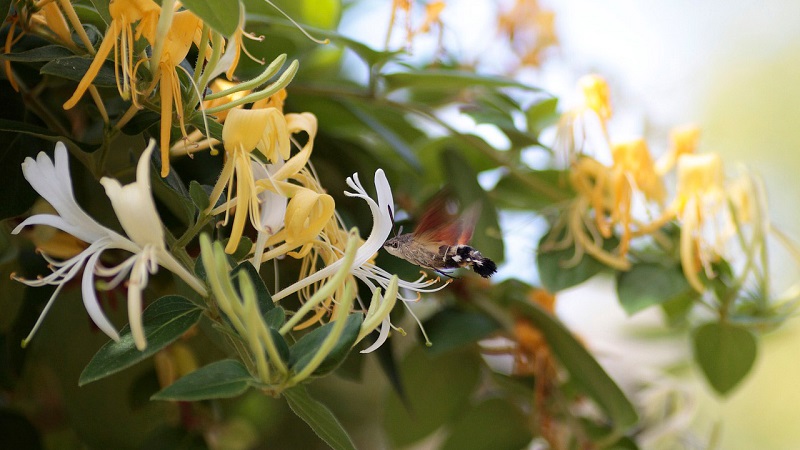
Other names: golden silver honeysuckle, honey liana, Japanese honeysuckle, Caprifolium japonicum (Thunb.), Lonicera brachypoda Siebold, Lonicera shintenensis Hayata.
Distinctive characteristics of Japanese honeysuckle:
- Curly or creeping vine up to 10 m in length. Young shoots are covered with a whitish edge.
- Leaves are usually ovoid or ovoid-oblong in shape, less often oblong-elliptical, sharp or pointed at the edges. The base of the leaf plate is heart-shaped or rounded. Leaf length - 3-8 cm, width - 1.5-4.5 cm. Young leaves are pubescent on both sides, old ones with a smooth top and finely ciliated edge. The petiole is smooth or pubescent, 0.5 cm long. The color is dark green with bright golden veins. The drawing resembles a set of dots or a grid.
- Paired flowers, two-lipped, formed on peduncles with an edge... The aroma is strong and pleasant. The color is white with purple splashes. The ovaries are loose, with a toothed cup and long cilia at the edges. From below, they are covered by 1/3 semicircular bracts. They are leaf-shaped or ovoid. Corolla length - 3-5 cm. The outer, pubescent side of the corolla is seated with glands.
- Flowering occurs 2 years after planting and lasts from June to September.
- The berries are round, glossy, black... Diameter - 3-4 mm. Inside there are elliptical black seeds, pungent in taste. Fruiting occurs in October - November.
- Reproduction methods - layering and seeds.
Japanese honeysuckle tolerates pruning and haircut, it is used for vertical gardening, forming carpet-type flower beds, decorating fences, creating a green shield. The plant is grown in winter gardens and indoor conditions.
Reference.The flowers are used in the production of perfume and folk medicine.
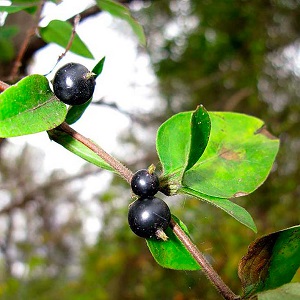 Japanese honeysuckle grows best on sandy loam, drained or loamy soils with neutral pH = 6.5-7.2.
Japanese honeysuckle grows best on sandy loam, drained or loamy soils with neutral pH = 6.5-7.2.
Bushes need shaping, because young shoots quickly grow and get tangled. A metal, nylon, wooden mesh or strong laces serve as a support for the shrub.
In a temperate climate before winter branches bend to the ground, fixed with hooks and covered with fallen leaves or spruce branches.
In the spring, they do not rush to prune shoots... The buds on the vines are difficult to see, and before the foliage appears, it is impossible to determine where are live and where are dead shoots. Therefore, the frozen shoots are removed after pecking the buds.
Popular varieties
The most famous varieties of Japanese honeysuckle - Aureoreticulata, Haliana, Variegated and Purpurea.
Aureoreticulata
Japanese honeysuckle Aureoreticulata (Aureoreticulata) is a kind of ornamental shrub. A distinctive feature - variegated leaves with a golden pattern on a green background... Another name for the variety is Golden mesh honeysuckle. Liana is cultivated for vertical gardening. Successfully growing in regions with mild winters, in the rest the plant needs shelter.
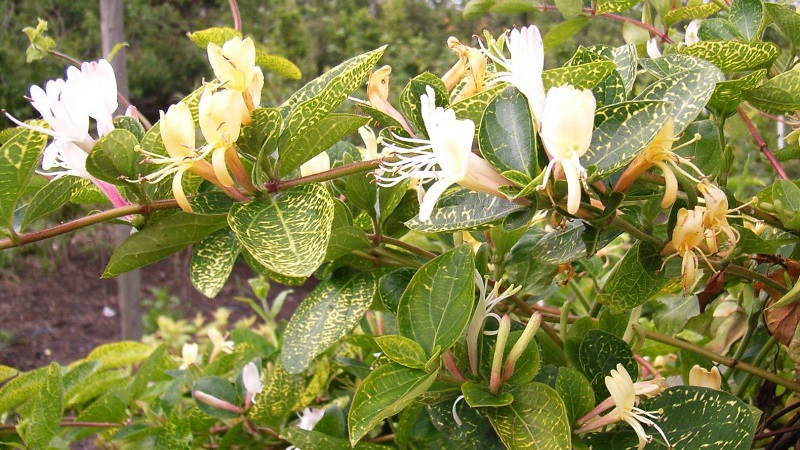
Variety characteristics:
- single flowering;
- liana height - 4 m;
- needs sunlight;
- flowers at the beginning of flowering are white; as they wilt, they acquire a honey tint;
- the aroma is pleasant, unobtrusive;
- fruits are black, inedible.
Haliana
Haliana (Halliana) - a variety ideal for creating a Garden of Eden... The flowers exude an incredible aroma that spreads for tens of meters. The plant tolerates winter staunchly in regions with a temperate climate, and in cold areas needs shelter and soil mulching.
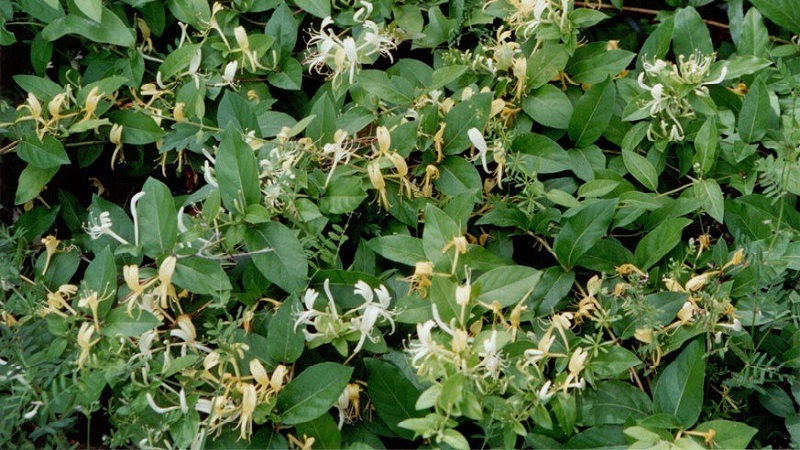
Variety characteristics:
- flowering period - June - October;
- flowers are white, with yellow blotches, 8-10 cm in diameter;
- leaves of a light green color, rounded;
- liana height - 6-7 m;
- branches grow by 1-1.5 m per year;
- the best conditions for growth and development are fertile, breathable soil.
Purpurea
Purpurea (Purpurea) - liana with decorative characteristics... Draws attention to the unusual color of the foliage. It is green in summer and turns purple in autumn. The shrub is used for vertical gardening, decoration of balconies and verandas.
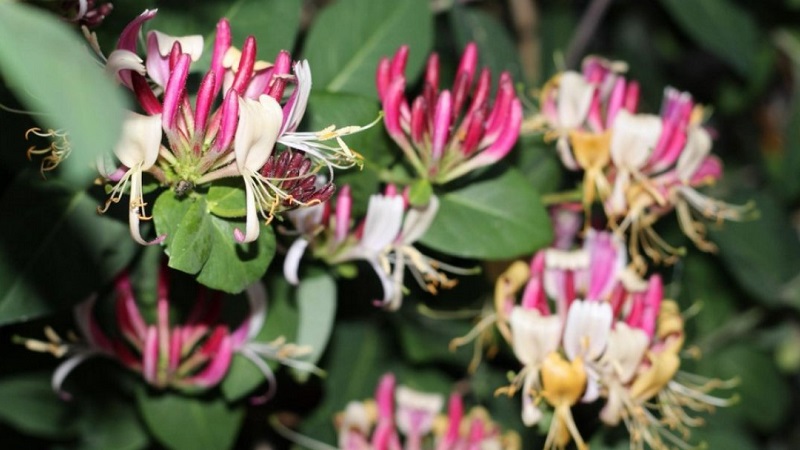
Variety characteristics:
- flowers are white, gradually turn yellow;
- flower length - 8 cm;
- flowering period - July - September;
- profuse flowering, single;
- berries are black, inedible;
- requires shelter with spruce branches for the winter;
- liana height - 3-5 m;
- frost resistance is average.
Variegated
Variegated (Sherlite) - variety of Japanese honeysuckle with high decorative effect... It is less common than others. The shrub is grown for vertical gardening and as a ground cover plant.
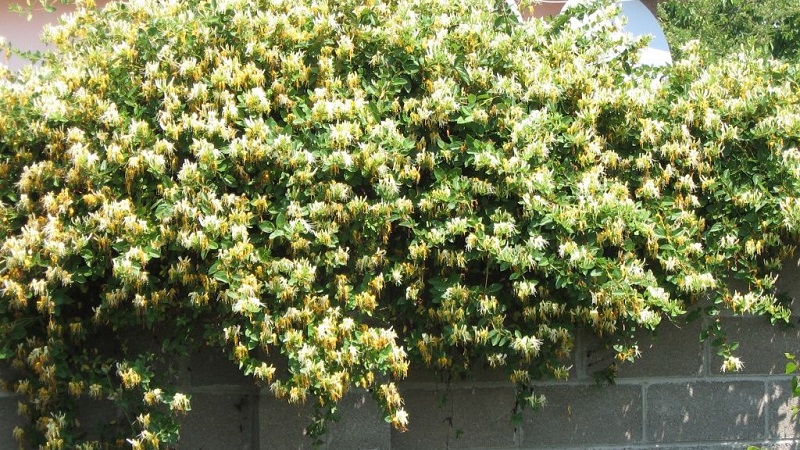
Variety characteristics:
- leaves are green, with cream edging;
- milky flowers;
- aroma is delicate, pleasant;
- liana height - 10-12 m;
- requires annual pruning to maintain a neat appearance;
- disembarkation is carried out in a sunny place without stagnant water;
- berries are dark purple, inedible.
Interesting on the site:
Medicinal properties and indications for use
Despite the fact that the berries of Japanese honeysuckle are inedible, they are used to treat various diseases and pathological conditions. Traditional medicine uses berries to:
- increase the production of gastric juice and normalize digestion;
- relieve inflammation;
- improve immunity;
- remove excess fluid from the body;
- normalize blood pressure;
- lower blood glucose levels;
- eliminate the symptoms of indigestion;
- support the body with anemia;
- cure colitis and gastritis;
- reduce the frequency of migraines.
Most often, medicinal tea is prepared: put 25 g of berries in a thermos and pour 250 ml of hot water. Insist for 3 hours and take 100 ml 3 times a day 30 minutes before meals.
The extract is obtained from honeysuckle flowers and add it to anti-wrinkle cosmetics and mouth rinses.
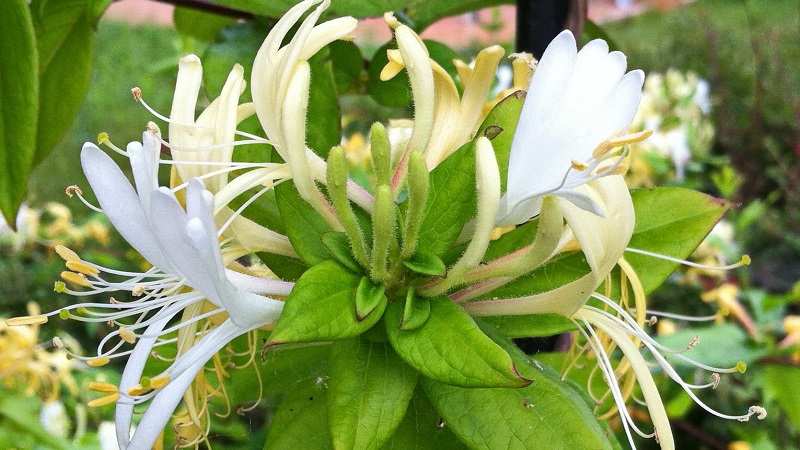
Pure Honeysuckle Essential Oil mixed with coconut, almond or peach and applied to the pulsation zones. The result is a natural perfume with an exquisite aroma.
Reference. Japanese honeysuckle berries are astringent, diuretic and anti-inflammatory.
In traditional Chinese medicine, Japanese honeysuckle flowers are used to treatment of diseases of the stomach, lungs and colon. Infusions and decoctions are prepared from the flowers. Ointments based on them help get rid of ulcers, skin infections, erosions. An infusion of fresh honeysuckle leaves is used to heal wounds.
Growing from seeds
The method of growing decorative honeysuckle from seeds is the most profitable in terms of saving time and effort... The plant adapts to the planting site and grows quickly.
Sowing is carried out with self-collected seeds or purchased. To collect seed, overripe fruits are chosen: small ones are discarded, only large ones are left. There are two ways to get seeds:
- The berries are rubbed through a sieve and the gruel is soaked in water. The pulp will float to the surface, and the grains will remain at the bottom. Then they are washed with running water and dried in the open air.
- The fruits are crushed on a paper towel. After the moisture is absorbed, the seeds, along with the pulp, are dried and used for planting.
 Packaged planting material of Japanese honeysuckle is sold in the form of seeds and berries... They do the same with the acquired fruits. When choosing ready-made seeds, pay attention to the shelf life and check the information on the botanical name, species name and variety.
Packaged planting material of Japanese honeysuckle is sold in the form of seeds and berries... They do the same with the acquired fruits. When choosing ready-made seeds, pay attention to the shelf life and check the information on the botanical name, species name and variety.
Seeds intended for sowing in the year of harvest are stored at room temperature in a place protected from direct sunlight. Seed material for sowing next year is stratified - stored in a refrigerator at a temperature of + 2 ... + 5 ° C. Seeds remain viable up to 70% for two years.
Attention! For Japanese honeysuckle, spring sowing is preferable: the seedlings will have time to get stronger before the onset of cold weather. Sowing work is performed in March - April.
The seeds are disinfected in a pink solution of potassium permanganate for 24 hours.
For sowing, take soil from a gardening store or loose soil from a garden... The soil is prepared independently from equal parts of peat, humus and river sand. The substrate is watered with a strong solution of potassium permanganate or calcined in the oven, cooled and laid out in containers without tamping.
The soil is moistened abundantly and seeds are spread every 10 cm... A thick layer of sand or a mixture of soil and sand with a height of 5-10 mm is poured on top. The containers are tightened with foil or glass is placed and placed on a sunny windowsill. The air temperature must be at least + 20 ° С. The soil is watered 2 times a week through a sieve so as not to wash the seeds.
Seedlings appear 30-35 days after sowing... Stratified seeds germinate a week earlier.
In case of dense sowing, seedlings are dived into boxes, observing an interval of 5-10 cm.
The seedlings are transferred to the open ground in the last days of May - early June.
Violet LE-Japanese Honeysuckle
LE-Japanese Honeysuckle - violet variety with flowers remarkably similar to Japanese honeysuckle... An ornamental plant is distinguished by abundant and long flowering.
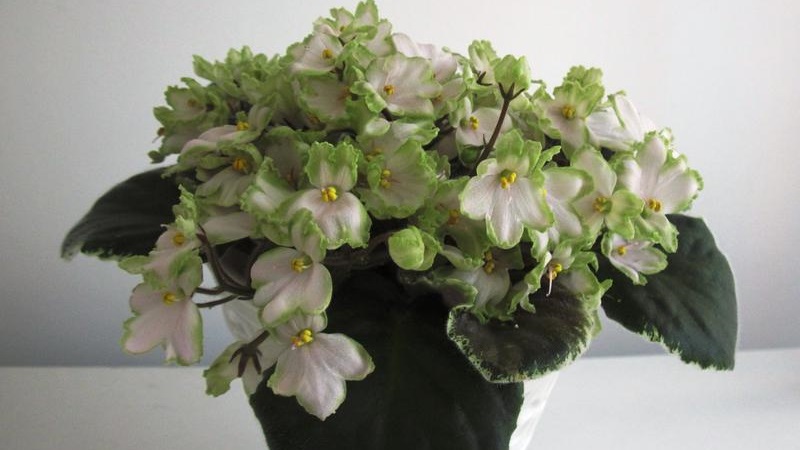
The socket is neat, consists of green leaves with white-pink variegation.
Flowers are small, of an unusual shape, with lace edges... The color is white with green edging. The lower petals are longer than the upper ones, which, according to gardeners, gives them a similarity to a wasp.
Conclusion
Japanese honeysuckle is one of the varieties of common honeysuckle. Fast-growing lianas are used in landscape design to decorate walls, fences, verandas. The plant is unpretentious in care, it endures cold weather. The flowers exude a pleasant aroma, the berries are colored black or dark purple.
The most popular varieties are Aureoreticulata, Haliana, Variegated and Purpurea.
Honeysuckle is used to treat gastrointestinal tract, lungs, joints, diabetes, skin diseases, erosions and ulcers. The extract and essential oil are added to cosmetics.